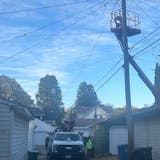Opinion editor's note: Star Tribune Opinion publishes a mix of national and local commentaries online and in print each day. To contribute, click here.
•••
Thousands of low-income Minneapolis families are struggling to obtain safe and affordable housing. Their wages haven't kept up with inflation and rising prices for necessities like food and heat leave less to cover rent. Rental units they can afford are increasingly few and already occupied, and available units are increasingly more expensive than they can afford.
The reasons for this crisis are well-known, accepted by broad consensus of experts: There exists a housing shortage decades in the making; a growing population of higher-income households is bidding up prices for what housing is available; income disparity is widening to the disadvantage of renters at lower price points.
In short, the forces of housing supply and demand are driving up rents just as the full impacts of an inflationary economy take hold.
Unfortunately, this consensus, much like that of scientists on the causes of climate change and epidemiologists on the safety of vaccines, is vulnerable to politically manufactured skepticism and misinformation that, when spread to a sufficiently vocal minority of voters, can be a counterproductive force to addressing the affordable housing crisis.
In Minneapolis, the new myth that "building more housing increases neighborhood rents" is taking over for the old myth that "building more housing lowers neighborhood property values." We reject both propositions. Like those who succumbed to the political pressures of NIMBYism, policymakers who accept so-called housing supply skepticism risk locking our city into a worsening housing affordability crisis.
The vast majority of rental units affordable to low- and moderate-income households are in unsubsidized, market-rate housing that is already built and has paid off its mortgage debt. It therefore doesn't face the same cost pressures, like rising land and construction prices, as newer properties. This keeps rents lower and makes these units naturally more affordable to low- and moderate-income residents.

